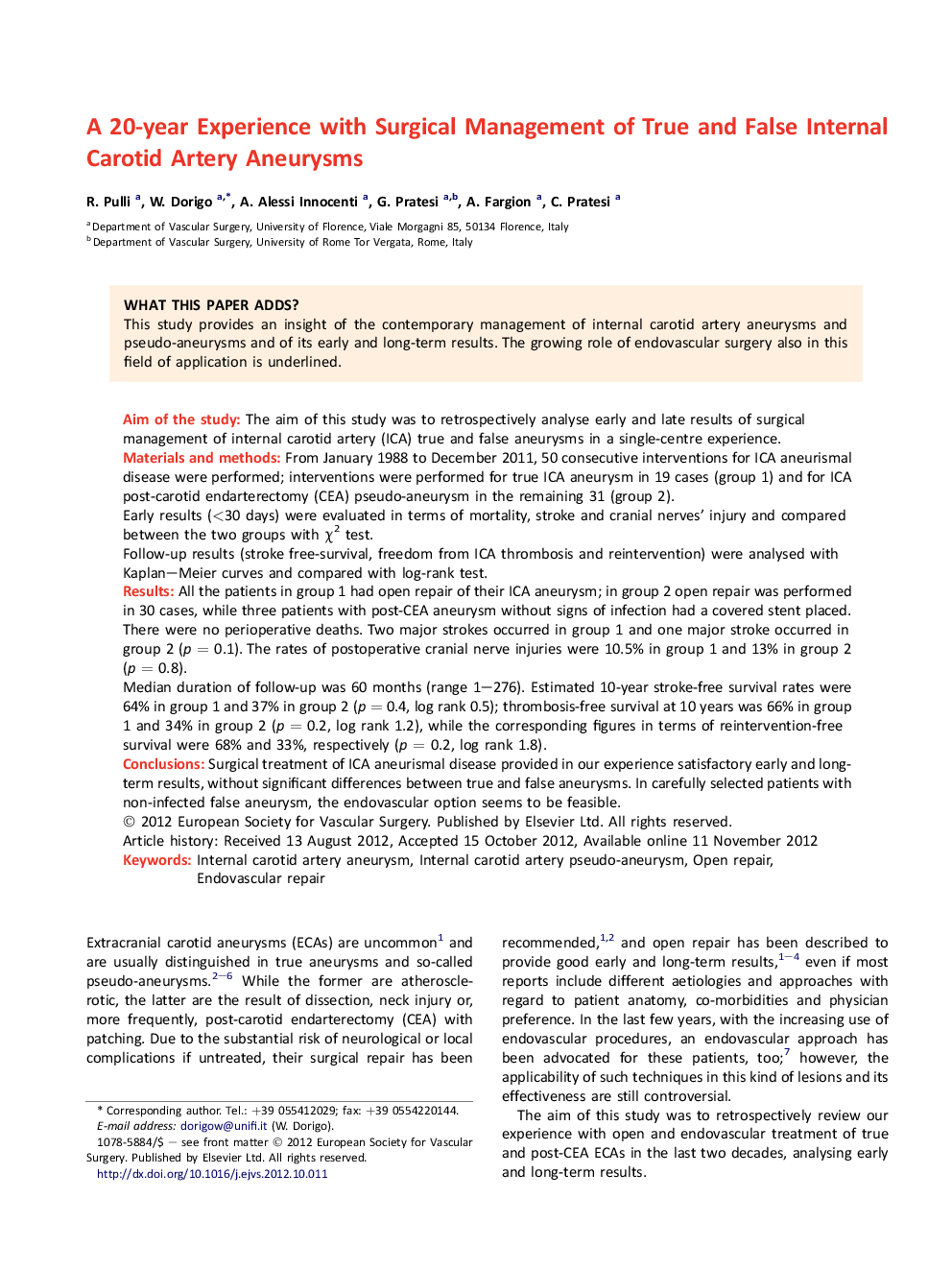| Article ID | Journal | Published Year | Pages | File Type |
|---|---|---|---|---|
| 2912363 | European Journal of Vascular and Endovascular Surgery | 2013 | 6 Pages |
Aim of the studyThe aim of this study was to retrospectively analyse early and late results of surgical management of internal carotid artery (ICA) true and false aneurysms in a single-centre experience.Materials and methodsFrom January 1988 to December 2011, 50 consecutive interventions for ICA aneurismal disease were performed; interventions were performed for true ICA aneurysm in 19 cases (group 1) and for ICA post-carotid endarterectomy (CEA) pseudo-aneurysm in the remaining 31 (group 2).Early results (<30 days) were evaluated in terms of mortality, stroke and cranial nerves' injury and compared between the two groups with χ2 test.Follow-up results (stroke free-survival, freedom from ICA thrombosis and reintervention) were analysed with Kaplan–Meier curves and compared with log-rank test.ResultsAll the patients in group 1 had open repair of their ICA aneurysm; in group 2 open repair was performed in 30 cases, while three patients with post-CEA aneurysm without signs of infection had a covered stent placed.There were no perioperative deaths. Two major strokes occurred in group 1 and one major stroke occurred in group 2 (p = 0.1). The rates of postoperative cranial nerve injuries were 10.5% in group 1 and 13% in group 2 (p = 0.8).Median duration of follow-up was 60 months (range 1–276). Estimated 10-year stroke-free survival rates were 64% in group 1 and 37% in group 2 (p = 0.4, log rank 0.5); thrombosis-free survival at 10 years was 66% in group 1 and 34% in group 2 (p = 0.2, log rank 1.2), while the corresponding figures in terms of reintervention-free survival were 68% and 33%, respectively (p = 0.2, log rank 1.8).ConclusionsSurgical treatment of ICA aneurismal disease provided in our experience satisfactory early and long-term results, without significant differences between true and false aneurysms. In carefully selected patients with non-infected false aneurysm, the endovascular option seems to be feasible.
